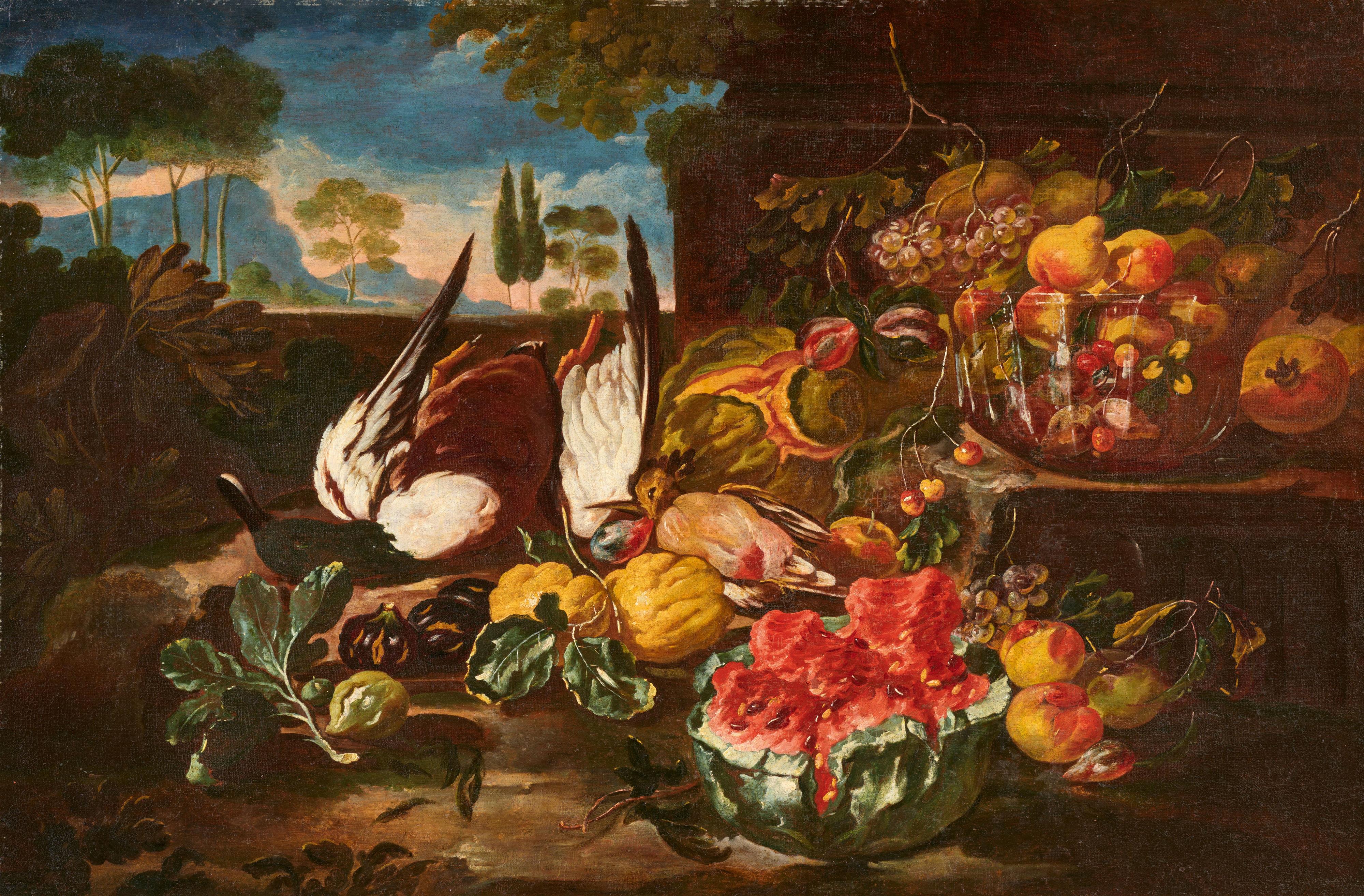Giovanni Paolo Castelli, called Lo Spadino
Still Life with Watermelon, Citrus Fruits, Figs, Pomegranates, Pumpkins, Cherries and other Fruits and Flowers, on a Ledge before a Panoramic Landscape
Oil on canvas (relined). 93 x 133.5 cm.
This beautiful and hitherto unpublished canvas depicts a rich display of fruit and hunting trophies arranged before a mountainous and wooded landscape. Both the composition and some stylistic elements, such as the reflections on the fruit, still show the influence of David de Coninck and, foremost, Abraham Brueghel. However, the bright colours, broad brushstrokes and the evocative atmosphere are already distant from Flemish naturalism and typical of the Roman Baroque still life.
The painting is a characteristic example of Giovanni Paolo Castelli's mature work, and can be most securely ascribed to the first decades of the eighteenth century, as suggested by affinities to the works of Pietro Navarra. The composition strongly recalls some of the most accomplished compositions of the painter, such as the ones now kept in the Pinacoteca di Montefortino.
Giovanni Paolo Castelli belonged to a family of still life painters who were leading in Rome in the second half of the seventeenth century: he himself achieved considerable fame, and many of his works were quoted in inventories of the most important Roman families. He began working for the Chigi family in 1689; and Cardinal Benedetto Pamphili owned eleven paintings by him in 1725, whilst several others were owned by the Spada and Rospigliosi. Many were also kept in Naples and Florence (for example with the Corsini), a sign of a fame that had expanded well beyond the bounds of the eternal city.
Certificate
Prof. Alberto Cottino, Turin, 25.2.2023.

